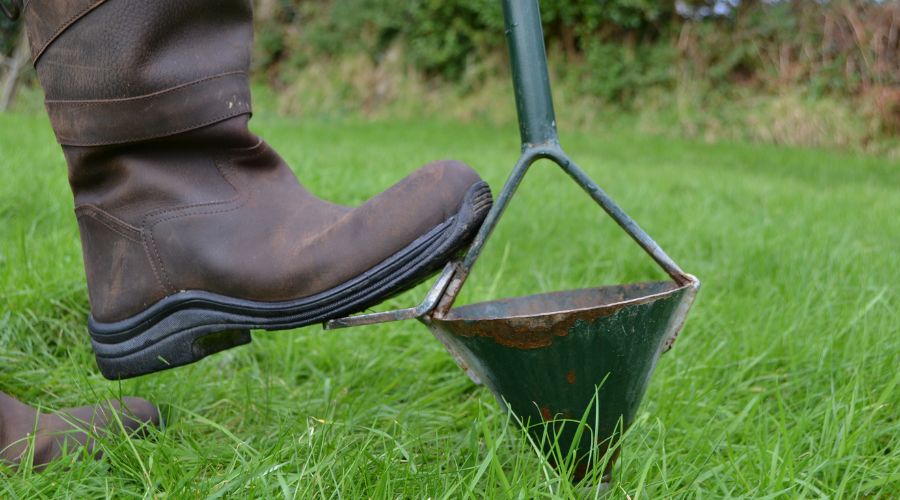Report flags deficiencies that are limiting grass yields
1st January 2025
A Farming Connect report of agricultural soils has shown Welsh farms are falling short on pH and key macronutrients.

Many Welsh farms are missing out on grass yield potential because they fall short on pH and key macronutrients (P, K, Mg), the report shows.
More than 3,000 soil samples were collected by Farming Connect from grassland fields on livestock farms across Wales in the 12 months to March 2024.
Analysis of these has highlighted the opportunity for many farms to correct soil pH and indices needed for optimal grass production and environmental benefits.
Soil pH
Less than 50% were at pH 6.0–7.0, the optimum range for grassland, with the majority (53%) of soil samples below the optimum pH range.
Soil pH is integral to forage productivity as inadequate levels can negatively influence nutrient availability in soils and, as a consequence, forage performance.
Soils within an optimum pH range, will benefit livestock performance and farm economics as well as delivering environmental benefits through maximising resource efficiency as a Sustainable Land Management Outcome.
Reviewing lime and fertiliser applications may therefore be needed as a first step to ensuring pH does not negatively affect fertiliser utilisation while also reducing the risk of nutrient losses via run-off which will improve water quality.
P, K and Mg
It was a similar picture for phosphorus (P) and potassium (K), again with fewer than half of soil samples at the optimum indexes for these nutrients.
In fact, a large proportion of soil samples were categorised as being below the optimum P and K indexes.
For P and K, altering the indices is no quick fix as industry advice is to build up depleted levels, and to run down concentrations of nutrients that are higher than they should be.
A large percentage were higher than the optimum index for magnesium (Mg), which can cause soils to become difficult to work.
Mg concentrations at index 0 were also reported and circumstances in which livestock risk hypomagnesaemia (grass staggers) are principal reasons for correcting levels of this nutrient.
Importance of soil testing
Siwan Howatson, head of technical at Farming Connect, said:
“These results indicate the importance of regular soil testing and targeted nutrient management on farms.
“Get in touch with your local Development Officer today to learn more about how Farming Connect can support you to improve your soil health which in turn will also achieve the Sustainable Land Management Outcomes; mitigating flood and drought risk as well as maximising carbon sequestration and storage.’’
Farming Connect soil clinics provided the opportunity for registered businesses to have soils analysed.
Sampling and analysis were also carried out on the Farming Connect Our Farms Network Farms.
The samples were compared to accepted industry standards, as set out in the AHDB Nutrient Management Guide RB209, last updated in June 2023.
They were categorised by region – North East, North West, Powys, South East and the South West, and this showed that region did have an influence on the level of some nutrients, notably Mg.
Read more soil health news.
